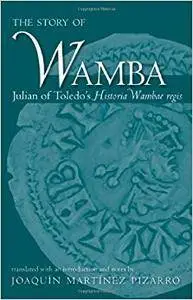Julianus, Joaquin Martinez Pizarro, "The Story of Wamba: Julian of Toledo's Historia Wambae Regis"
English | 2005 | ISBN: 0813214122 | PDF | pages: 281 | 1.4 mb
English | 2005 | ISBN: 0813214122 | PDF | pages: 281 | 1.4 mb
In 673, the recently elected King Wamba of Spain was confronted with a separatist rebellion in Visigothic Gaul and other territories in the northeast of his realm. After recapturing Barcelona and Gerona, the ruler crossed the Pyrenees at the head of his armies and, taking one fortress after another, followed the retreating rebel forces to the final bastion of Nimes. From there Wamba led them back to Toledo as captives in a triumphal procession. Soon thereafter, Julian, a young priest at the court of Toledo, wrote his "Historia Wambae regis", an account of Wamba's accession to the throne and his victory in the first campaign under his command. Julian's work is one of few political narratives of the early middle ages. The author found himself at the beginning of a career that would raise him to the apex of the ecclesiastical hierarchy as bishop of Toledo, but that would also see him involved, suspiciously, in the deposition of Wamba that same year. "The Story of Wamba" offers the first complete English translation of Julian's work. The text is fully annotated and preceded by a thorough introduction to its historical and literary backgrounds. The historical study focuses mainly on the tension between royal and aristocratic power during the reigns of Wamba and his two predecessors, Chindasvind and Reccesvind. The position of the church, caught in these secular conflicts, is analyzed in detail as is the plight of Julian, the son of converted Jews, as he took his first steps at court and in the Visigothic church. The literary study focuses on the political vocabulary of the text, the ideological messages implicit in its various sources and models, and its unique combination of classical, late antique, and medieval elements.



